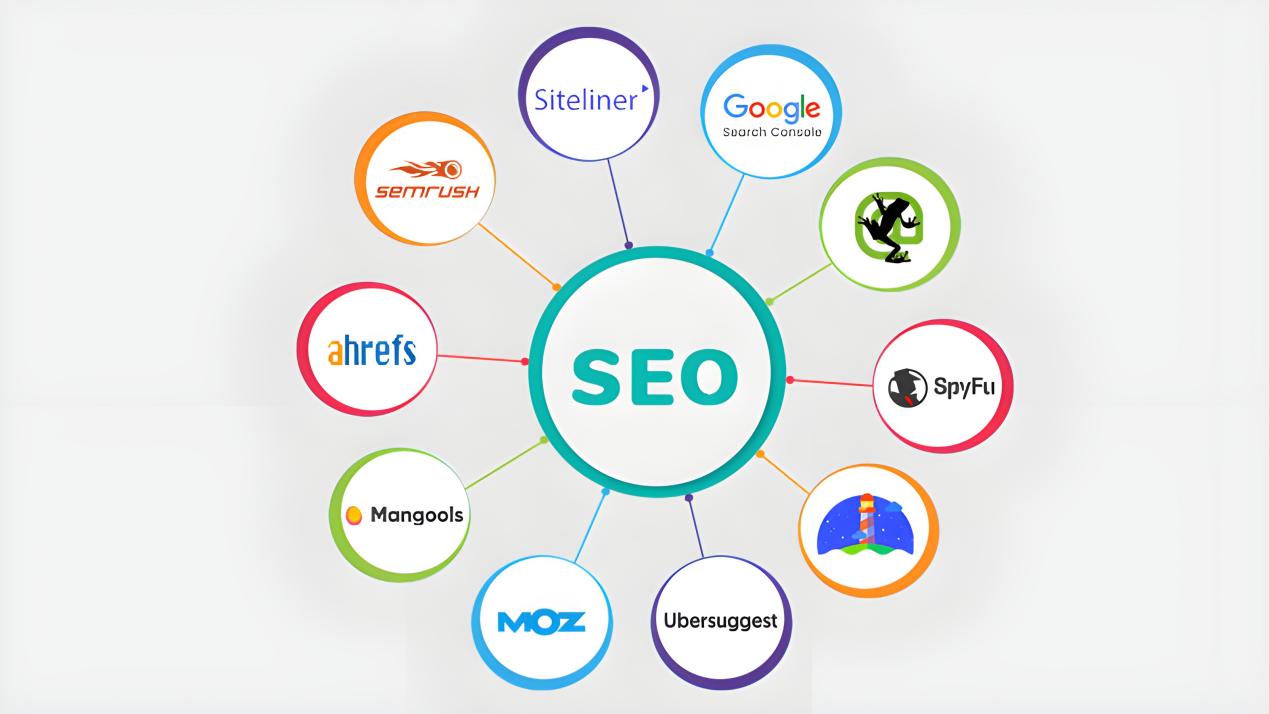.jpg)
Generative Engine Optimization (GEO): The Future of AI-Driven SEO Explained
With the constantly changing environment of digital marketing and search engine technologies, companies and content developers are continually exploring new ways of maximizing their online presence. The so-called Generative Engine Optimization (GEO) is one of them. Whereas conventional Search Engine Optimization (SEO) entailed a content optimization process aimed at making search engines more visible, GEO goes a step further, incorporating the use of generative AI technologies to create better visibility of searches, relevancy of content, and interaction. This blog will discuss GEO, its nature, operation, advantages, challenges, and how it can be applied effectively.
What is Generative Engine Optimization (GEO)?
Generative Engine Optimization, also known as GEO, is a high-end digital marketing strategy that integrates the principles of SEO with generative AI technologies. The objective is to develop a content, strategies, and optimization strategies that are compatible with contemporary AI-based search engines and user behavioral patterns.
GEO focuses on AI generated content, predictive search trends and dynamic optimization techniques, as opposed to traditional SEO that has been highly dependent on keywords, backlinking as well as optimization of the technical aspects of a web site. It uses AI-based applications, such as ChatGPT, BERT, and other natural language processing (NLP) models, to predict what users are searching and deliver extremely relevant, contextually enriched information.
Why GEO is the Next Evolution of SEO
The digital ecosystem is evolving quickly as AI-powered search engines and intelligent content generators become a reality. This is why GEO is gaining greater significance:
-
AI-Driven Search Algorithms: Google and other search engines are incorporating AI models such as MUM (Multitask Unified Model) and Bard to understand context and match content by more than keywords. GEO makes your content compatible with these AI algorithms.
-
User Intent Focus: Modern search uses user intent as a priority, rather than exact match keywords. GEO relies on AI to process queries and create content that best suits the needs of users.
-
Dynamic Content Generation: Generative AI can automatically generate variations in content, meta descriptions, titles, and even structured information. GEO optimizes search visibility of these AI-generated outputs.
-
Personalization at Scale: GEO enables brands to build personalized and engaging user experiences driven by predictive analytics, which raises click-through rates (CTR) and conversion rates.
Key Components of Generative Engine Optimization
Application of GEO demands knowledge of its main elements. Here are the major pillars:
1. Generative AI Content Creation
The core of GEO is AI-generated content. Generative AI is capable of generating blogs, landing pages, product descriptions, social media posts, etc without losing its contextual relevance. Through the analysis of existing content, user queries, and trending topics, AI models create the optimum content satisfying user requirements and search engine needs.
2. Semantic SEO
GEO puts great emphasis on semantic search optimization, which entails the ability to generate content that implies the meaning of user queries. With AI models, context, synonyms, and related topics are comprehended, and content ranks based on a wider range of queries than exact-match keywords.
3. Predictive Analytics
Predictive analytics in GEO is a method of analyzing trends, search patterns and user activities to predict what users may want to see in the coming days. This preventive action will keep your content relevant and competitive.
4. AI-Powered Technical SEO
Technical SEO is a foundation of any online strategy, but GEO improves it with the help of AI tools. These tools are able to audit site structure, identify content gaps, optimize meta tags and validate structured data compliance towards rich snippets.
5. Continuous Optimization
GEO is not a once-only solution like conventional SEO. Generative AI constantly checks performance indicators, changes content, optimizes keywords, and adapts to the latest search trends.
How Generative Engine Optimization Works
GEO process can be divided into a few steps:
-
Keyword and Topic Research with AI
With the help of AI tools, search trends, competitor content, and user behavior are analyzed to create a complete list of target keywords and topics. -
Content Generation
High-quality content is generated using generative AI on blogs, landing pages, or social media posts. This is autonomously SEO-optimized on the basis of semantic pertinence and readability. -
Technical Optimization
AI verifies the speed of websites, mobile compatibility, metadata, schema markup, and internal links to meet technical SEO requirements. -
Performance Monitoring
GEO tools monitor organic traffic, bounces, CTR, and user activity. The AI will then dynamically refine content to improve rankings. -
Continuous Updates and AI Learning
AI algorithms transform through users and search engine manipulations and allows dynamic content that maintains your site competitive.
Benefits of Generative Engine Optimization
The use of GEO can bring several benefits to businesses, marketers, and content creators:
1. Enhanced Content Relevance
GEO creates content that is highly likely to satisfy the purpose of users, which enhances the likelihood of ranking in a variety of related search queries.
2. Improved Search Engine Rankings
GEO enhances visibility of the search engine results page (SERP) by using artificial content created by AI and technical optimization.
3. Increased Efficiency and Scalability
Creation and optimization of content through manuals are time consuming. GEO automates such processes so that content can be produced at scale without compromising quality.
4. Personalized User Experience
GEO localizes content to targeted audience groups, improving engagement, dwell time, and loyalty.
5. Data-Driven Decisions
AI-based analytics can deliver actionable data on how to improve marketing plans, key-word analytics, and content creation.
Challenges of Generative Engine Optimization
As much as GEO has immense advantages, it has a few challenges:
-
Quality Control: AI-generated content can occasionally be uncreative or out of context. Quality is necessary and controlled by human efforts.
-
Ethical Concerns: The overuse of AI runs a risk of plagiarism, misinformation, or loss of individual voice.
-
Complexity: GEO implementation needs technical skills, AI usage, and analytics knowledge, which might be a burden to small businesses.
-
Algorithm Dependence: GEO extensively depends on AI-based search algorithms. Rankings can be affected due to sudden alterations in search engine AI models.
Practical GEO Strategies for Businesses
In order to make GEO effective, the following strategies should be considered:
1. Integrate AI Tools Wisely
Create content using generative AI like ChatGPT, Jasper, Writesonic, or SurferSEO and never publish without reviewing and revising.
2. Focus on Semantic Relevance
Produce content that targets related queries, synonyms, and contextual queries. Find latent semantic indexing (LSI) keywords with AI.
3. Optimize for Featured Snippets and Rich Results
With structured data and AI-optimized structure, GEO can boost your likelihood of appearing in Google in featured snippets, knowledge panels, and rich results.
4. Leverage Predictive Analytics
Keep track of trending search and user behavior to predict future content demand. Planning content calendars and marketing campaigns with AI predictions.
5. Continuous Testing and Updates
SEO is not static. GEO focuses on real-time content optimization through AI monitoring tools to ensure constant improvement.
Future of Generative Engine Optimization
The future of GEO is being influenced by the emergence of AI-based search engines and chatbots like Google Bard and ChatGPT. Companies who integrate AI-based optimization practices will likely gain a competitive advantage in search presence and online marketing.
The development of GEO can be expected to do the following:
-
Voice Search Optimization: AI will comprehend spoken queries more effectively, and GEO is essential to voice search strategies.
-
Hyper-Personalization: Generative AI will provide content that is customized based on user behavior and preferences.
-
Real-Time Adaptation: GEO will allow websites to dynamically adapt to changing search trends in real-time.
Conclusion
Generative Engine Optimization (GEO) is a new trend in digital marketing that combines conventional methods of SEO with AI-based content creation, predictive analytics, and semantic search tactics. With the adoption of GEO, companies will be able to enhance content relevance, search engine presence, and user interaction and remain competitive in the competitive digital environment.
With AI constantly evolving the way search engines perceive and rank content, the need to incorporate GEO into your digital strategy is no longer a choice, but a necessity. Automation, analytics, and creativity provided by GEO guarantee that your content does not merely have a high search engine ranking but also makes a lasting impact on your audience. As a marketer, content creator, or business owner, the future-proofing of your online presence depends on knowing and acting you can do GEO.





.jpg)

.jpg)


.png)
.jpg)
